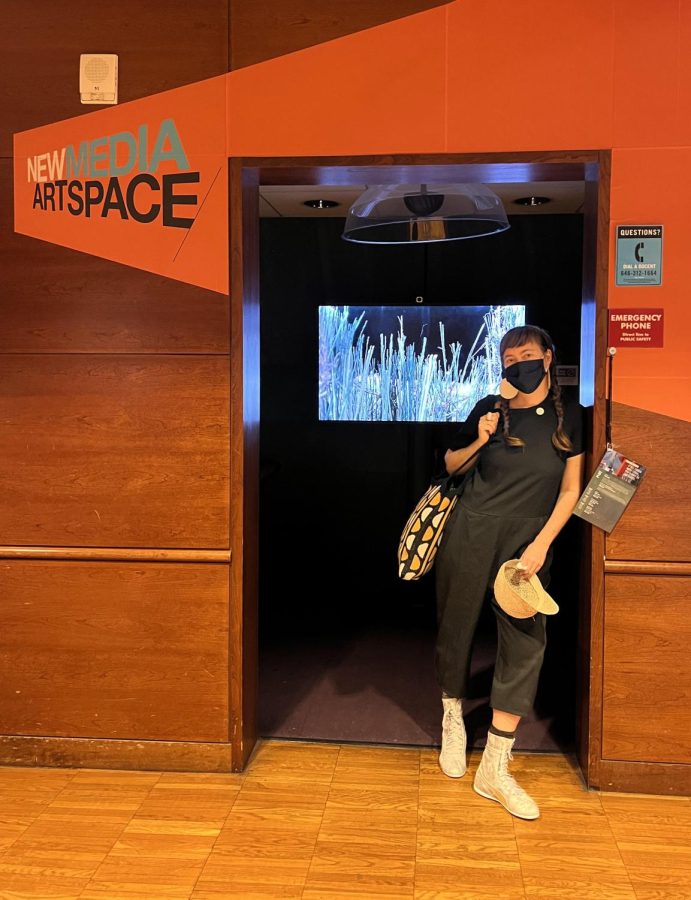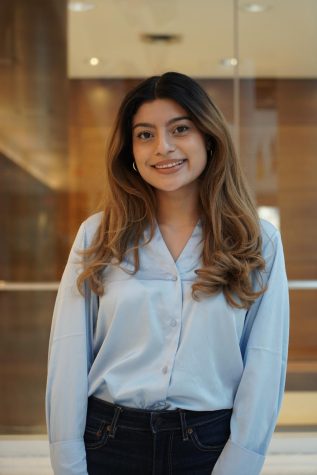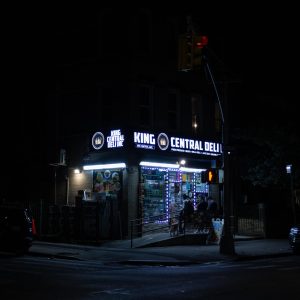New Media Artspace presents ‘Sarada Rauch: If All Things Were Equal, You’d Only Be the Sequel’
November 6, 2022
The New Media Artspace at Baruch College presents “Sarada Rauch: If All Things Were Equal, You’d Only Be the Sequel,” which opened on Sept. 19. The exhibition showcases the work of artist Sarada Rauch and will be available to view until Dec. 2 both virtually and in person.
The featured pieces consist of eight moving image works with animation, video, performance, photography, poetry, music and sculpture. The effects of war, colonization and exploitation are among the many subjects that pervade their work.
According to professor Katherine Behar, the curator of the New Media Artspace, Rauch’s work exemplifies the gallery’s theme for the academic year: crafting one’s political position. Evoking homespun dioramas through miniaturized settings, Rauch captures the major issues of the world in a tiny-scale.
“With deceptively modest means, they craftily manipulate things in the troubled present to arrive at impoverished but hopeful images of how the world might be otherwise,” Behar wrote in her curatorial statement.
Rauch, a Brooklyn-based artist originally from Los Angeles, has spent their career denying the established hierarchy of traditional art and found a space in the genre of new media art. Some of their previous work includes a two-sided album titled, “In the Realm of a Dying Star,” originally produced in 2016. Four music videos from this album are featured in the New Media Artspace exhibit and, alongside the other pieces, aim to start conversations on prominent issues.
“My influence comes from not accepting a lot of injustices that I see either very close to home or far away,” Rauch said in an interview with The Ticker. “It’s also a way of me coping with what I read or see in music, what I hear in the news programs that I listen to or what I see every day on the streets in New York.”
The first piece of the exhibit, “Topple,” highlights shrunken replicas of controversial statues from around the world, such as one of Christopher Columbus in Caracas and another of Cecil John Rhodes in Cape Town. These are eventually knocked over and smashed by the hands of the artist.
The artist’s hands played a recurring role in many of the videos, suggesting society’s complicity with the atrocities of the world. The piece “I have a hand in it,” as the title suggests, calls attention to Rauch’s fingertips which grasp a living room with a window through which viewers can witness a desolate land, bombarded with sounds of bombs. Audiences watch this video after having listened to a narration by Rauch in which they explain the sensation of watching scenes from the war in Syria from behind a screen.
As a compilation of eccentric works that cover complex topics, the exhibit is worthy of considerate viewing, according to Anya Ballantyne, a New Media Artspace docent and Baruch student.
“Everyone should just view it with an open mind and also view it maybe more than once to just get a better understanding of what the work is,” Ballantyne said.
As a former Baruch professor, who began their teaching career just as new media arts became an official minor in the Fine and Performing Arts Department, Rauch said they feel a sentimentality upon returning. “As the program grew, I grew,” Rauch said. “It’s almost like a homecoming.”
This connection that Rauch maintains with Baruch has caused much of their work to resonate with the community, especially students studying in the fine arts like Ballantyne.
“I think this may impact students, as it does touch on political issues that we can relate to, especially after living through the pandemic and the protests that happened during the pandemic,” Ballantyne said. “And, especially for new media art students, it allows us to think about different ways that we can create something.”
The gallery also hosted casual discussions with Rauch for students throughout October. Students can still hear from the artist at an upcoming lecture on Nov. 15 hosted by the Sandra Kahn Wasserman Jewish Studies Center and the New Media Artspace.








